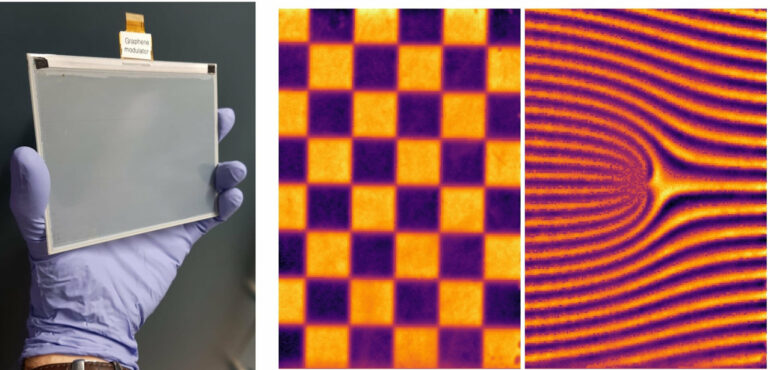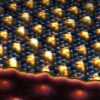Researchers at The University of Manchester’s National Graphene Institute have introduced a new class of reconfigurable intelligent surfaces capable of dynamically shaping terahertz (THz) and millimeter (mm) waves. Detailed in a paper published in Nature Communications, this breakthrough overcomes long-standing technological barriers and could pave the way for next-generation 6G wireless technologies and non-invasive imaging systems.
The breakthrough centers around an active spatial light modulator, a surface with more than 300,000 sub-wavelength pixels capable of manipulating THz light in both transmission and reflection.
Unlike previous modulators, which were limited to small-scale demonstrations, the Manchester team integrated graphene-based THz modulators with large-area thin-film transistor (TFT) arrays, enabling high-speed, programmable control over the amplitude and phase of THz light across expansive areas.
Professor Coskun Kocabas, Professor of 2D Device Materials at The University of Manchester, commented, “We have developed a new method to dynamically control THz waves at an unprecedented scale and speed. By integrating graphene optoelectronics with advanced TFT display technologies, we can now reconfigure complex THz wavefronts in real time.”
The research demonstrates various capabilities, including programmable THz transmission patterns, beam steering, grayscale holography, and a proof-of-concept single-pixel THz camera. These functionalities are made possible through fine-tuned electrostatic gating of graphene, a material known for its unique electrical and optical properties at THz frequencies.
Co-author Dr. M. Said Ergoktas, now a lecturer at the University of Bath, added, “Our devices operate by adjusting local charge densities on a continuous graphene sheet, allowing for pixel-level control without the need for graphene patterning. This architecture allows for scalable fabrication using commercial display backplanes.”
The team’s device architecture also supports dynamic beam steering and the generation of structured THz beams carrying orbital angular momentum, key features for advanced THz communication systems. One striking demonstration showed how a binary “fork” diffraction pattern generated donut-shaped beams with tunable vortex order, useful in multiplexed data transmission and beam shaping.
Beyond communications, the researchers showcased a single-pixel THz camera capable of imaging concealed metallic objects, representing a significant advance for non-invasive inspection in security, industrial monitoring, and medical diagnostics. This approach uses compressive sensing algorithms to reconstruct images from modulated THz patterns, highlighting the flexibility of their programmable platform.
“Until now, THz modulators have struggled with scale and speed,” Kocabas noted. “By leveraging display technology, we demonstrate that it’s possible to bring this field from lab-scale demonstrations to real-world applications.”
The authors indicate that the next steps involve enhancing modulation speeds and extending these systems to operate in reflection mode for full spectroscopic imaging. Future work may also focus on integrating this platform with advanced beamforming systems and next-generation 6G wireless technologies.
More information:
Yury Malevich et al, Very-large-scale reconfigurable intelligent surfaces for dynamic control of terahertz and millimeter waves, Nature Communications (2025). DOI: 10.1038/s41467-025-58256-w
Provided by
University of Manchester
Citation:
Graphene-based programmable surfaces advance terahertz imaging and 6G communications (2025, March 27)



